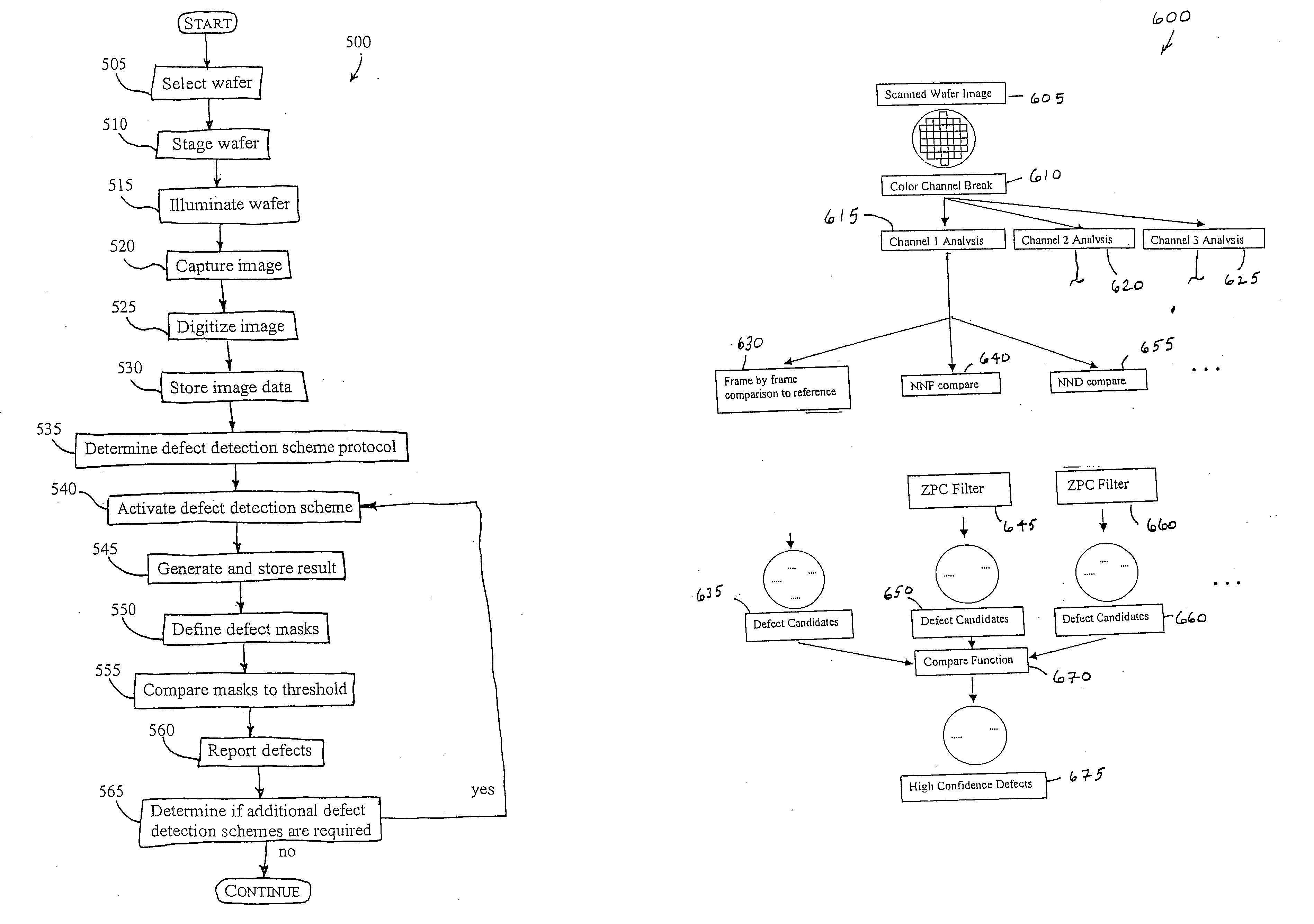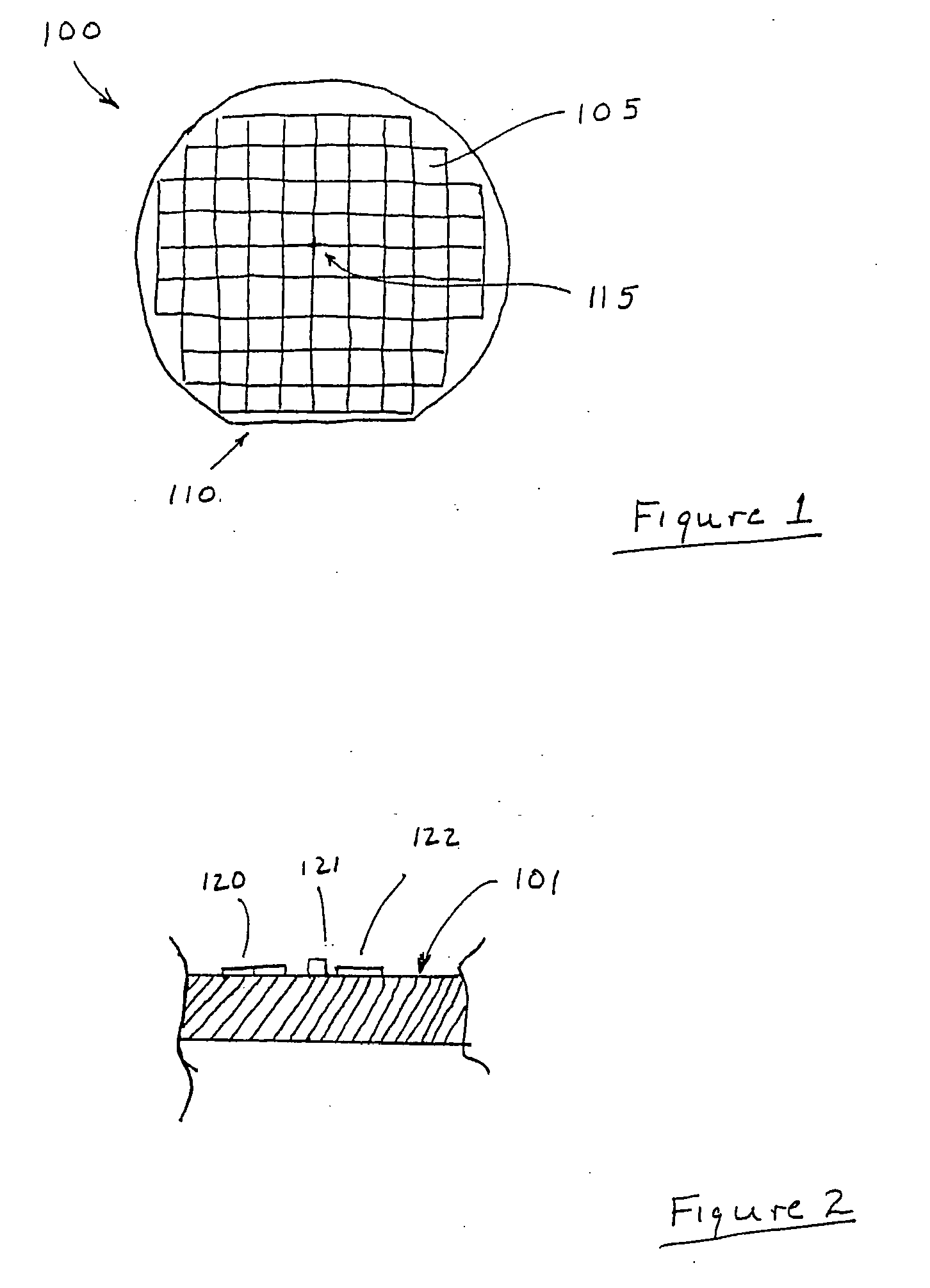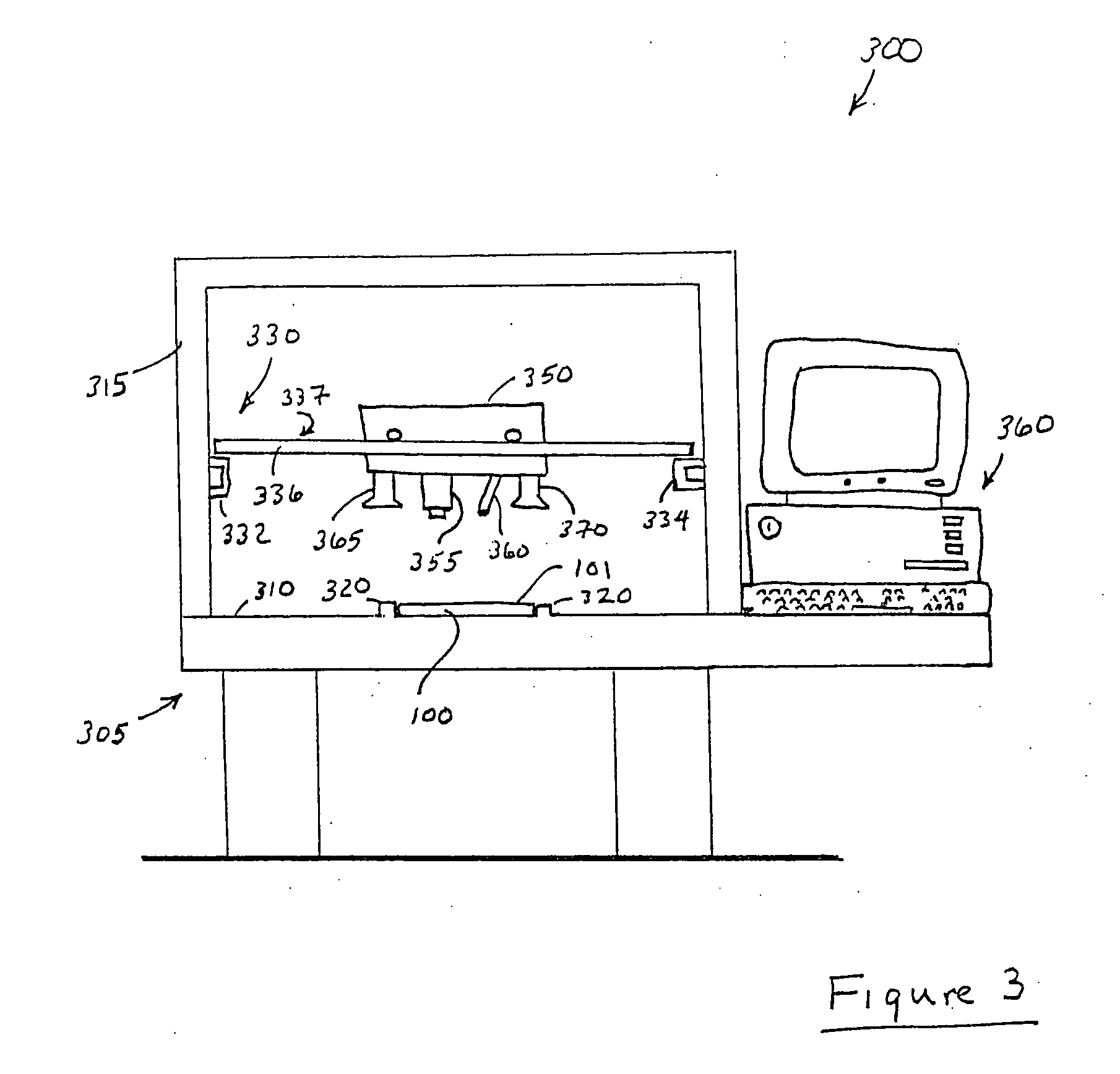Method and system for defect detection
- Summary
- Abstract
- Description
- Claims
- Application Information
AI Technical Summary
Benefits of technology
Problems solved by technology
Method used
Image
Examples
Embodiment Construction
[0024] The present invention is directed to a method and system for performing inspections using an optical platform for collecting images of an object and then processing the images in a manner that produces a higher degree of confidence that the defects involving features formed on its surface, if any, have been properly identified. The present invention exploits multiple independent detection schemes and correlates them using a defect mask to increase detection sensitivity while decreasing unwanted nuisance defects. The method and system of the present invention are especially advantageous when applied to the inspection of semiconductor wafers and printed circuit boards during the production process.
[0025] The present invention will now be described in such an embodiment, that is, one useful for inspecting semiconductor wafers during the manufacturing process. The method and system of the present invention may, for example, be used to inspect wafers to which photoresist has been...
PUM
 Login to View More
Login to View More Abstract
Description
Claims
Application Information
 Login to View More
Login to View More - R&D
- Intellectual Property
- Life Sciences
- Materials
- Tech Scout
- Unparalleled Data Quality
- Higher Quality Content
- 60% Fewer Hallucinations
Browse by: Latest US Patents, China's latest patents, Technical Efficacy Thesaurus, Application Domain, Technology Topic, Popular Technical Reports.
© 2025 PatSnap. All rights reserved.Legal|Privacy policy|Modern Slavery Act Transparency Statement|Sitemap|About US| Contact US: help@patsnap.com



